Day 3 of a 4-day Autumn Migration tour. The forecast was for heavy rain this morning, which never arrived. It was meant to brighten up in the afternoon though and that didn’t happen either, at least not until after we had finished. And the afternoon ended up being wetter than in the morning!
As it was still only spitting with rain first thing, we headed to Stiffkey first. Walking down the permissive path, the hedges and trees were quiet. Down by the river, a small flock of Golden Plover flew over. We could hear Bullfinches calling the other side of the river, and had some quick glimpses as they flew off through the trees. Then a female perched up briefly in the sallows. There was no obvious sign of migrants having arrived overnight. A couple of Blackbirds flushed along the path could be local birds. A Cetti’s Warbler shouted from the bushes.
Up onto the seawall, it was a big high tide this morning and the saltmarsh was pretty much covered in water. Just the tops of the bushes and the dune ridge at the back was still visible. Several Brent Geese were swimming out on the water, and there were plenty of Black-headed Gulls.
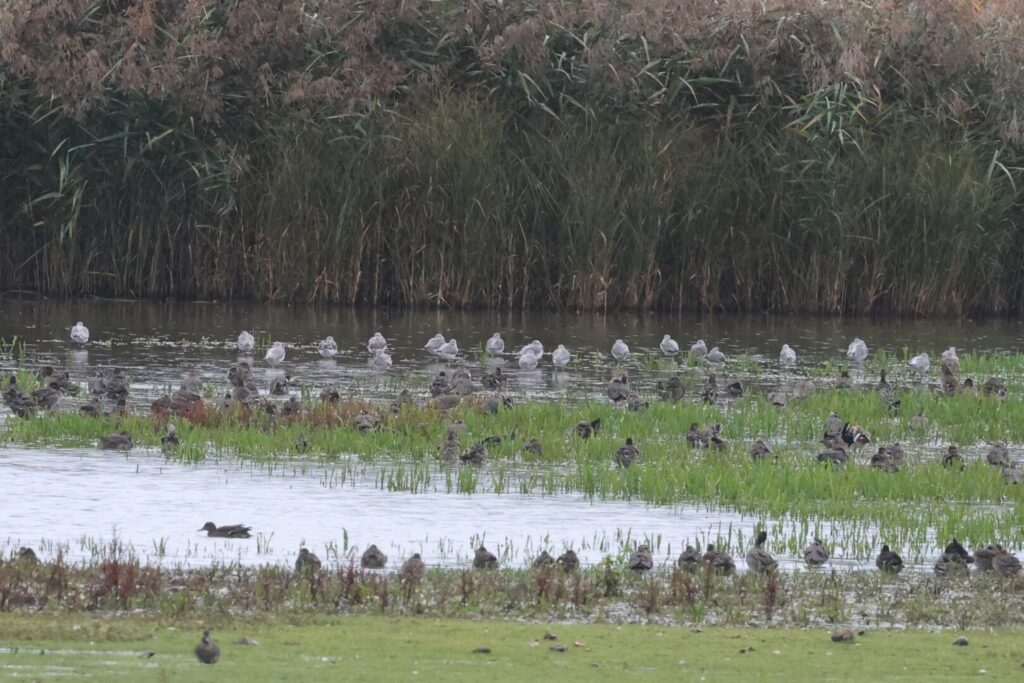
Turning our attention to the Fen, we immediately picked up a group of Greenshanks roosting on the back of the main island. They were much paler than the other waders – we counted 21 of them here today. There were lots of Lapwing too, and plenty of ducks, mainly Teal, but also one or two Pintail. We hadn’t been there long before everything was flushed by a pale male Marsh Harrier which drifted over and whirled round overhead. Some flew off, some eventually landed again.
A Kingfisher called, and shot across over the reeds briefly. A little later it flew in from the saltmarsh behind us and disappeared back down into the trees in the river channel, but too quick for most of the group to get on it. A Scandinavian Rock Pipit was perched on one of the boats moored in the channel, presumably forced off the saltmarsh by the big tide. A succession of flocks of Golden Plover flew over.
Scanning out across the harbour, we could see lots of waders roosting on the tip of Blakeney Point. A large group of Oystercatchers were gathered on the shingle. Two Eider were diving in the water just in front of them. When they flew off, we could see they were a 1st winter male and a female.
As we walked down to the far end of seawall, a Song Thrush came out of the bushes. It flew out into the reedbed where we could see it now feeding in the brambles. Noticeably grey-brown above, it was a migrant of the continental race. Several Dunnocks came out of the suaeda on the edge of the water too. More than usual here, they might be migrants too. Two Egyptian Geese flew past, calling noisily.
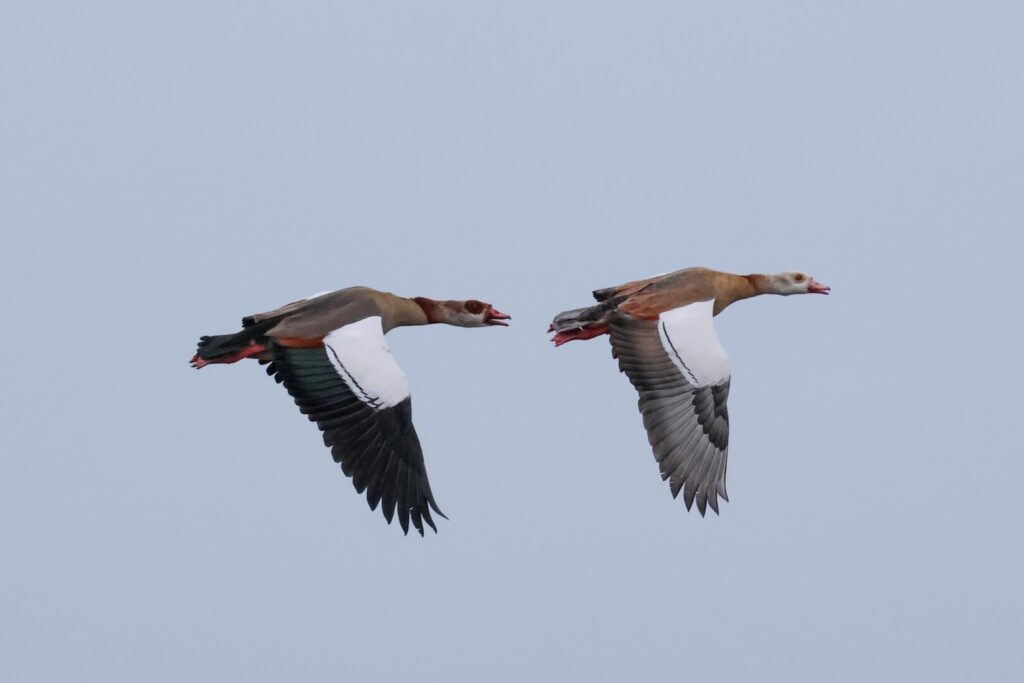
When we got down to the corner of the coast path, opposite the harbour, the tide was just starting to go out. Scanning the water in the Pit, we could see several Great Crested Grebes and then we found a single Red-throated Diver too. A single redhead Red-breasted Merganser was diving in front of the old lifeboat station. When it flew and landed further round the Pit a group of eight Red-breasted Mergansers swam out.
The waders were starting to gather on the edge of the saltmarsh as the water receded. There were lots of Dunlin and Ringed Plover, with a few Bar-tailed Godwit, Grey Plover, Knot and Turnstone. When they all flushed and flew round, we looked across to see a Merlin flying low over the water. The waders all landed again, closer now as more mud was exposed just across the harbour channel.
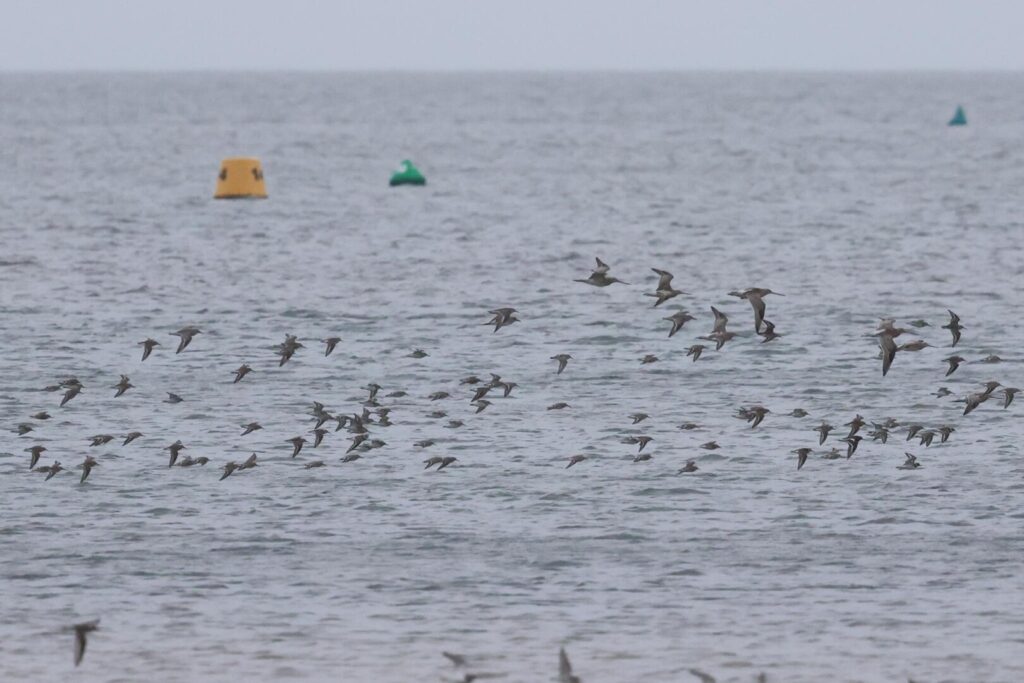
Lots of Pintail flew in off the harbour and over the saltmarsh. We counted at least 55 in the first wave. More landed on the water, where we got them in the scopes. Some of the drakes are moulting back into smart breeding plumage again.
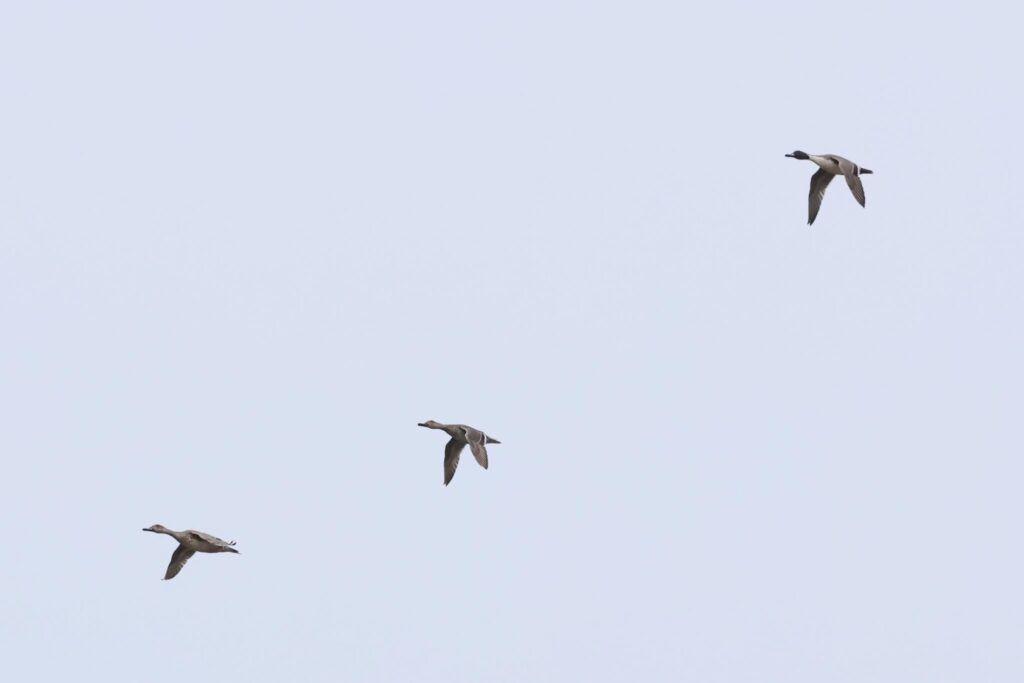
There was not much visible migration here this morning, not many birds moving again. A few flocks of Starlings came in and a small group of Lapwings flew over. One or two Skylarks too, but once again it was hard to tell if they were actively migrating or here for the winter.
As we walked back along the seawall, there were fewer waders on Fen now. However, we did pick up a few Ruff out there now, and a small group of Golden Plover dropped in to bathe. We got them in the scopes for a closer look.
Back to the minibus, we drove round to Wells next. Walking in to the Woods, we stopped to scan the boating lake. There were several Little Grebes and Tufted Ducks out on the water. Cutting in through the birches, the trees were very quiet. No sign of any tit flocks. A Common Buzzard was perched in the pines watching us. Round on the south side of the Dell, we found a lone Chffichaff and several Blackbirds feeding in the birches.
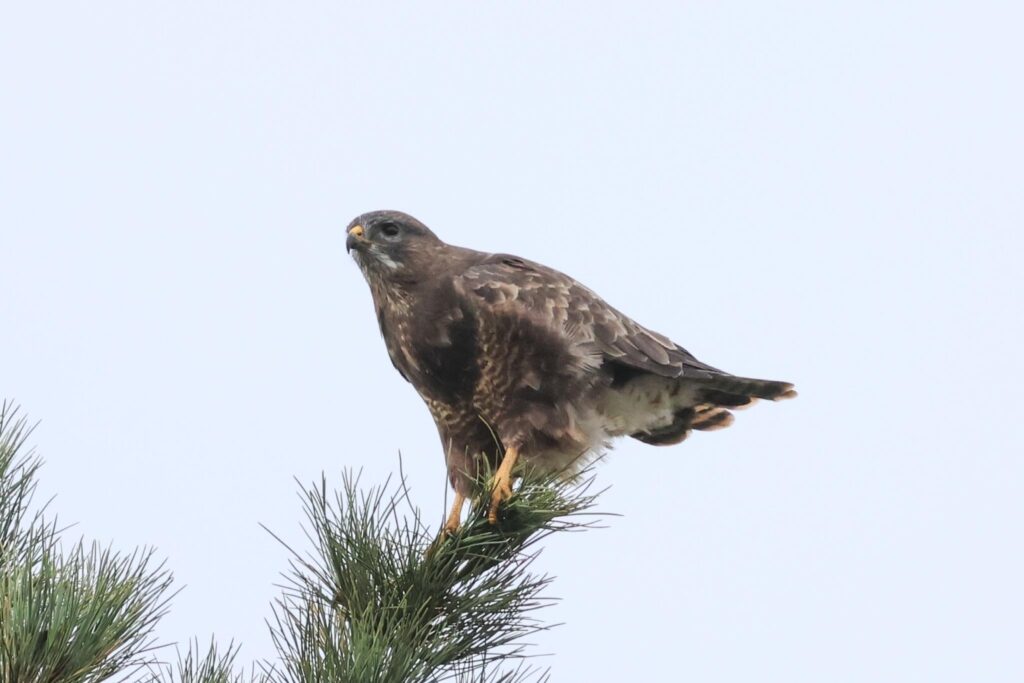
Across the main track, we walked out into the open area. The bushes here seemed to be quiet too, no sign of any significant arrival of migrants here overnight either. We stopped to scan the grazing marshes, where several Pink-footed Geese were feeding out on the grass. They were quite close, so we got a very good view of them now through the scopes. A couple of Greylags and a single Curlew were with them. Further round, we finally found a few more birds – several Reed Buntings, a couple of Blackbirds and a single Song Thrush came out of the bushes.
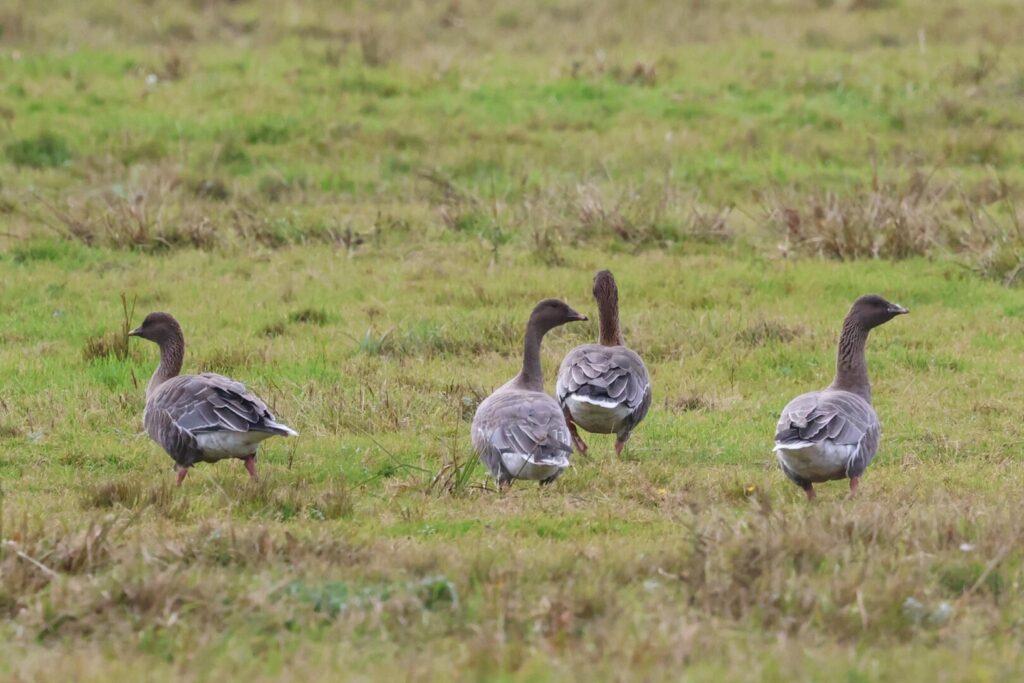
Back out on the main track, we continued on to the drinking pool. The pool itself was quiet but coming back out we did finally find some tits feeding up in the pines. There were several Goldcrests and a Treecreeper with them. We hoped they might move west into the deciduous trees, but instead they moved deeper in to the pines, up and out of view.
Continuing on a short way further west, the deciduous trees were quiet, so we turned to head back. We walked in round the west side of the Dell, where we flushed a couple of Jays in the holm oaks and another Chiffchaff was calling in the birches. There had been a Yellow-browed Warbler reported by the campsite earlier, and we finally found the tit flock now back by the boating lake. Another Chiffchaff was with the tits. The flock was moving fast now and crossed the path quickly ahead of us, before disappearing through the birches back the way we had come. We had good views of Yellow-browed Warblers at Holkham the other day, so we decided not to try to follow the flock further. It was time for lunch.
We stopped for lunch on the picnic tables at beach cafe, where we could get a welcome hot drink. It had been dry and seemed to be starting to warm up, so we had shed our coats for lunch. Of course, now we saw dark grey clouds approaching from the west and it started to spit with rain. We packed up quickly and went back to the minibus to get our coats back on.
It looked like the worst of the rain may pass to the west, so we walked back out for a quick look at the harbour. A Marsh Harrier quartered over the saltmarsh beyond East Hills. Down to the beach, a Great Crested Grebe was diving in the harbour channel and a Harbour Seal swam past. A close Bar-tailed Godwit and a Grey Plover were feeding along the near edge of the water. Lots of Brent Geese were gathered along the far side of the channel further out.
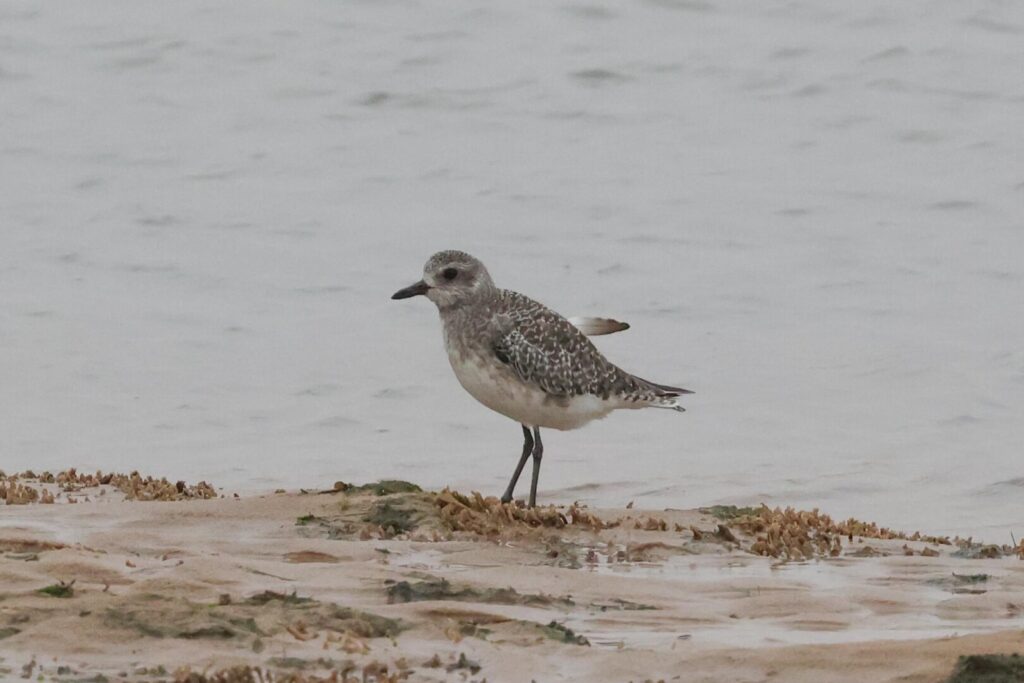
We had just started to scan for waders when it began to rain more heavily. The new lifeboat slipway provided some convenient shelter, and a good spot to scan the mudflats from. There were lots of Redshank the other side of the channel and a single Greenshank with them. We could see more Bar-tailed Godwits, including a well marked juvenile, plus more Grey Plover, Ringed Plover and Turnstones. A Herring Gull kept flying up to drop a mussel it had collected onto the shingle, hoping to break into it.
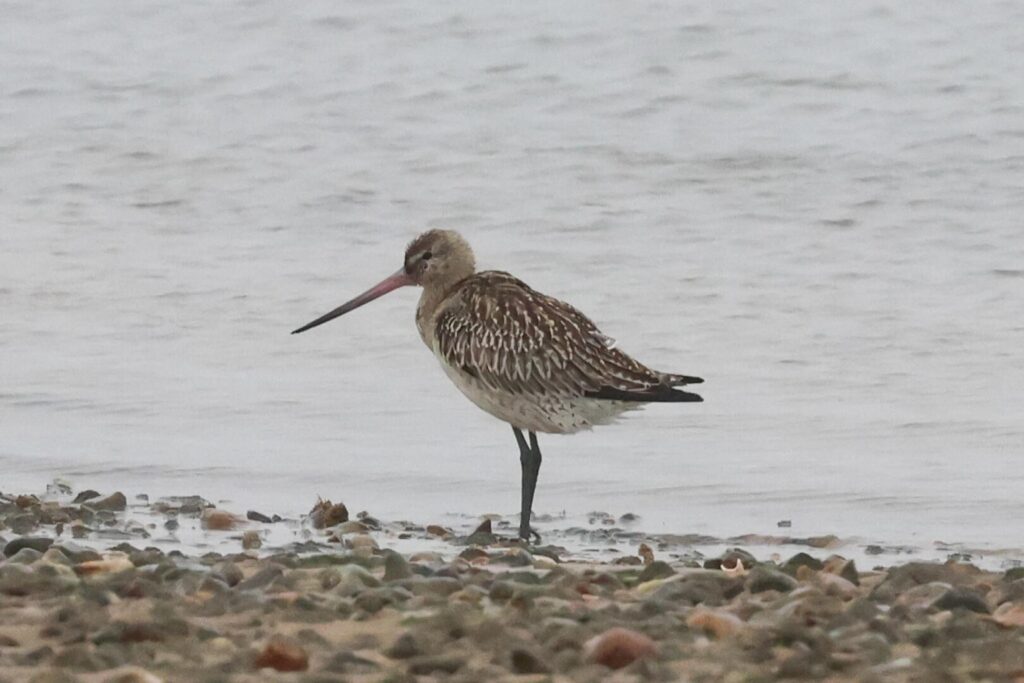
Looking at the rainfall radar, we could see the worst of the rain should pass over us quickly and it wasn’t long before it eased. We walked back round via the outer harbour, but there was nothing different in the channel further up. Lots of Oystercatchers were feeding on the mussel beds opposite.
We moved on to the pools at North Point, where it was still spitting with rain when we arrived. A single Spotted Redshank was feeding on the pool west of the track with several Common Redshanks. We got it in the scopes from the car park, where we could see its longer, finer bill before it disappeared behind the rushes. There were lots of Greylags in the fields, and a few Pink-footed Geese and a couple of Egyptian Geese on the grass. All we could find on the eastern pool were a few of the commoner species of ducks. The Spotted Redshank reappeared but then flew off towards Wells harbour.
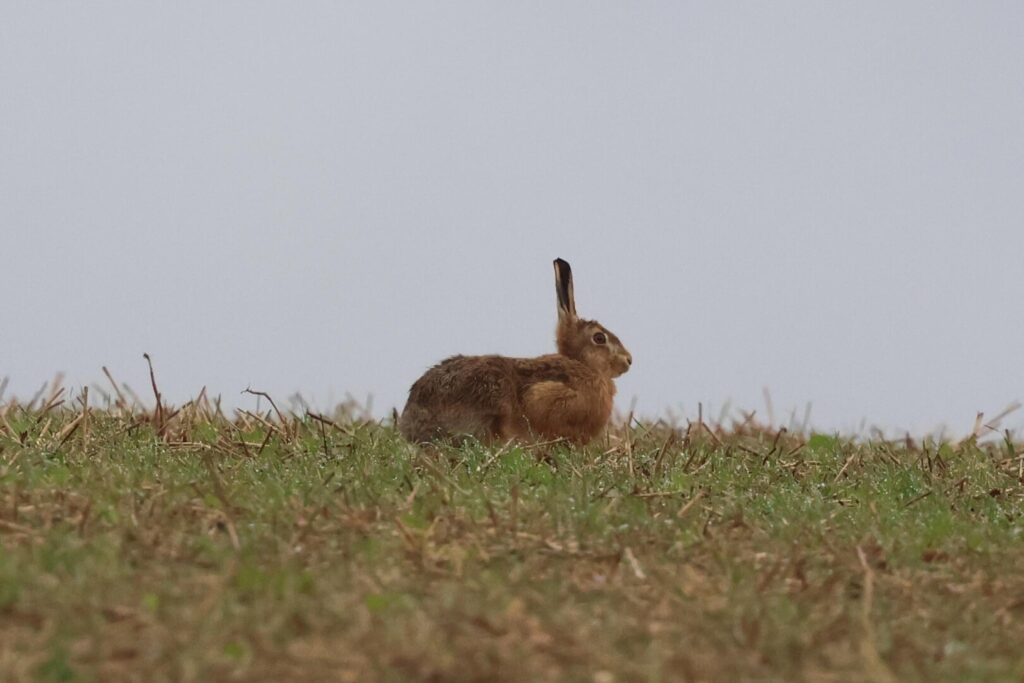
We had the option to walk out to the saltmarsh here to see if the returning wintering Pallid Harrier might come in, but it was still a bit early. It seemed better to keep moving rather than stand around in the drizzle, so we drove round to Stiffkey Greenway and walked west along the coast path. A Stock Dove and a Brown Hare were in the fields and several Brent Geese, Curlews and Little Egrets were out on the saltmarsh.
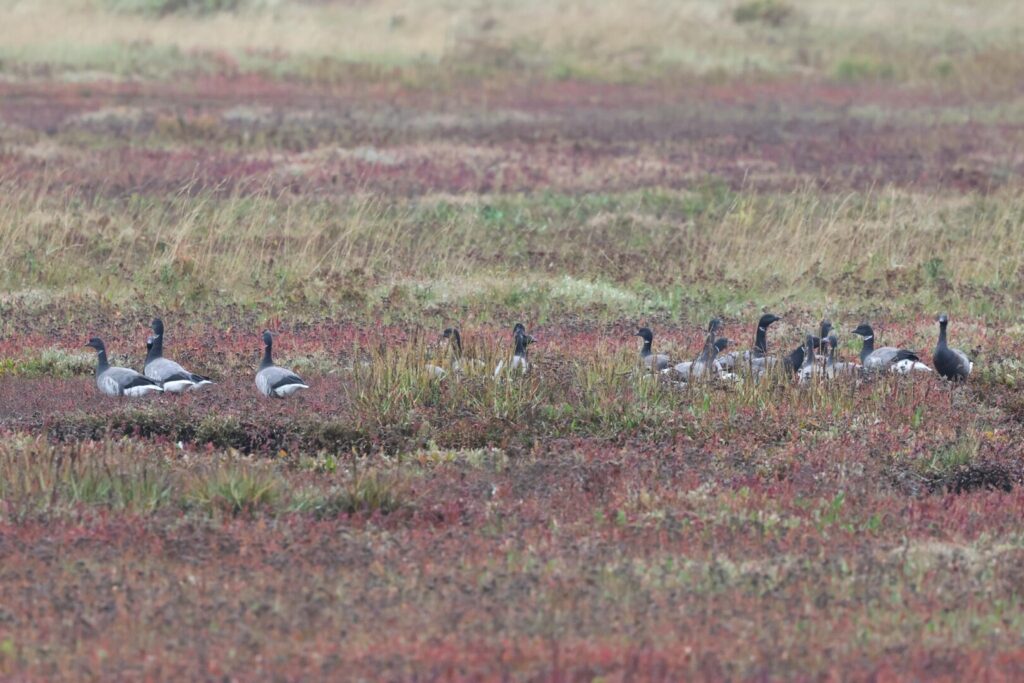
There were some larger flocks of Starlings flying west just inland now, but the bushes by the path were quiet at first. When we got to the Whirligig, we finally found a few Blackbirds, a Song Thrush and a brief Blackcap.
We stopped to scan and found a couple of Marsh Harriers quartering out over the saltmarsh. It was still a bit early for the Pallid Harrier to come in. Now, looking west, it began to get very misty and the visibility started to go. Then it started to spit with rain.
A few Chaffinches flew over and dropped into the bushes by the Whirligig. We walked round to see if we could find them, or anything else, but it started to rain more heavily. We decided to beat a retreat. As we drove back inland, the skies finally started to brighten up from the west, only a couple of hours later than forecast. Time to dry out before our last day tomorrow.
















